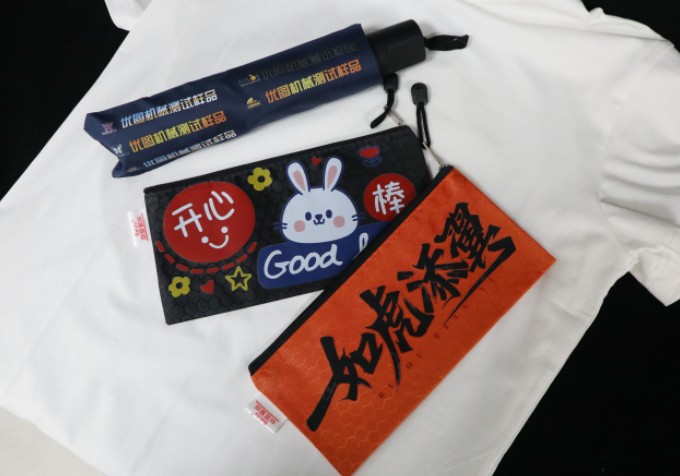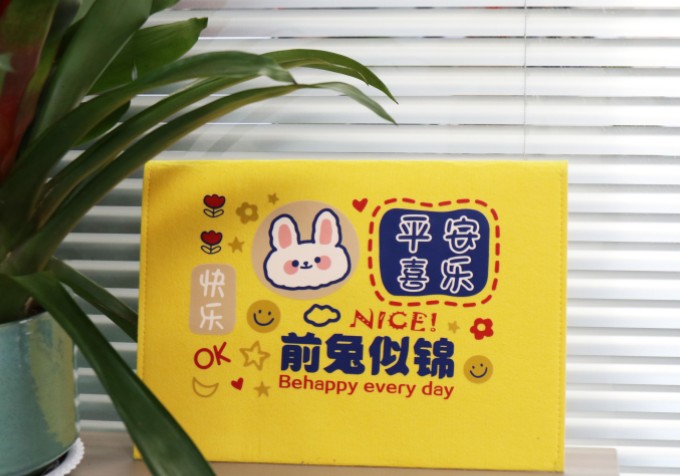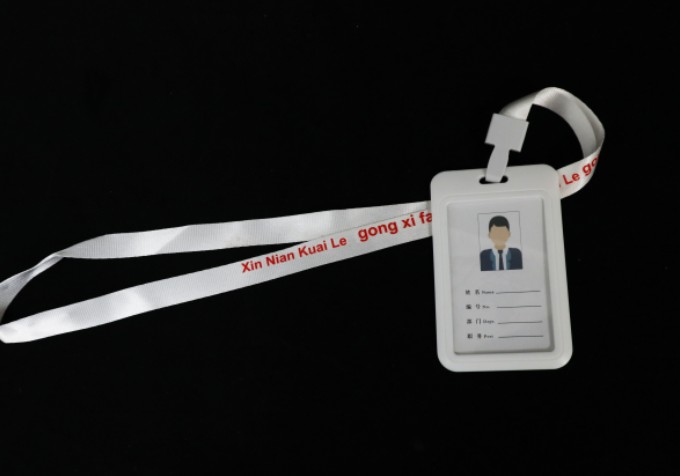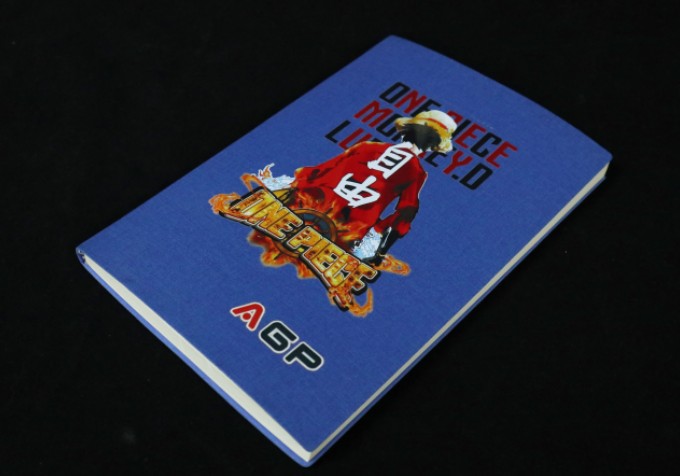In the world of custom apparel and print-on-demand services, choosing the right printing technology is critical to achieving high-quality and long-lasting results. Two methods popular in the industry are DTF (direct to film) transfer printing and dye sublimation printing.
While both methods produce high-quality prints, there are some key differences between the two that may affect their suitability for different types of projects. In this article, we'll explore the differences between DTF printing and dye-sublimation printing, and help you decide which method is best for your needs.
 1. What is DTF printing?
1. What is DTF printing?
DTF printing, or Direct to Film printing, is a relatively new method of printing that has gained popularity in recent years. The method involves printing an image onto a special film using a special printer and ink. After printing the image, a heat press is used to transfer it to the desired material.
DTF printing has a wide range of applications in the garment and textile industry. It can be used to create custom t-shirts, hoodies, hats, and other apparel items with full-color designs. DTF printing is also popular for creating custom sports jerseys, as it allows for the printing of player names and numbers in full color.
Another application of DTF printing is in the production of custom packaging materials. DTF printing can be used to create custom boxes, bags, and other packaging materials with full-color designs that stand out on store shelves.
DTF printing has also been used in the production of custom home decor items, such as pillows, blankets, and wall art. The ability to print full-color designs onto a wide range of materials makes DTF printing an attractive option for creating unique and personalized home decor items.
2. What equipment is needed for DTF printing?
1. DTF Printer: A direct-to-film printer, or DTF printer, is a special printer designed specifically for printing on film. The film’s powder reacts with the printers’ unique inks to form a strong bond.
2. DTF Transfer Film: DTF PET film, is a specialized film with an powder coating. The fabric receives the pattern from the film.
3.Heat Press: A heat press transfers the design from the DTF film to the fabric. In a heat and pressure press, the adhesive powder on the film bonds to the fabric.
3. Advantages and disadvantages of DTF printing
Advantages:
- Prints made with DTF printing are of the highest quality and will not fade or crack over time.
- In addition to cotton and polyester, DTF printing can be used on a variety of other fabrics.
- For small-run printing, DTF printing is a cost-effective solution.
- User friendly: convenient and easy to operate, TEXTEK provides you with machine training services.
Disadvantages:
However, dtf printing does have some limitations. For example, it is not suitable for printing on dark-colored materials because the ink used in DTF printing is not opaque. In addition, dtf printing requires specialised equipment and ink.
4. What is Dye Sublimation Printing?
Sublimation printing is another popular method of printing that is commonly used in the garment and textile industry. This method involves printing an image onto special paper using a dye-sublimation printer. Once the image is printed, it is transferred onto the desired material using heat and pressure.
Sublimation printing has a rich history that dates back to the mid-20th century. The process was first developed in France in the 1950s as a way to transfer designs onto synthetic fabrics. The original sublimation process involved printing a design onto paper using special ink and then transferring the design onto the fabric using heat and pressure.
Over time, sublimation printing technology evolved, and new methods were developed to improve the quality and durability of the prints. One of the key developments in sublimation printing was the introduction of dye-sublimation printers in the 1980s. These printers allowed for the creation of high-quality prints with vibrant colors and sharp details.
In the early days of sublimation printing, the process was primarily used in the textile industry to create custom designs on synthetic fabrics. However, as the technology improved, sublimation printing began to be used in a wider range of applications, including marketing materials, home decor items, and even industrial products.
5. What equipment is needed for dye sublimation printing?
1. Sublimation Printer: The sublimation printer is a unique equipment designed to print exclusively with sublimation inks. Sublimation ink, used by the printer, turns into a gas when exposed to heat and pressure.
2. Transfer Paper: Paper with a special coating transfers the design to the substrate. The design is printed onto transfer paper using sublimation rather than regular ink.
3. Heat Press: The design can be transferred from the transfer paper to the substrate using a heat press. Sublimation ink is activated in the press by applying heat and pressure. At this point, it changes phase into a gas and bonds to the substrate.
6. Advantages and disadvantages of sublimation printing
Advantages:
- Broad color spectrum: Sublimation printing can produce a broad spectrum of colors and print vivid, high-quality images with excellent detail.
- Durability: Sublimation prints hold up well over time and resist cracking and fading.
- Versatility: Various substrates, including polyester, ceramics, metal, and more, can be printed with sublimation technology.
- Timely design transfer: Sublimation printing is a great option for longer runs because it has a quick and effective design transfer onto the substrate.
Disadvantages:
- Few potential printing surfaces exist since sublimation printing is only permitted on polyester-coated substrates. As a result, not all substrates may be compatible.
- Sublimation printing can be more expensive than other printing techniques because it requires a heat press and sublimation printer.
- Polyester and polyester blends are the only textiles that can be printed using sublimation.

7. Comparison of DTF and Dye Sublimation
Transfer process and print quality
Both DTF and dye sublimation use heat to transfer the design onto the product. However, DTF uses an adhesive, while dye sublimation bonds the ink to the fabric molecules.
In DTF printing, the image is transferred using transfer paper, while in dye-sublimation printing, the solid is transformed into a gas immediately without going through a liquid state. The difference in how the two printing technologies transfer the image into the product affects the quality of the print and its durability.
DTF printing provides better print quality than dye-sublimation printing because the ink is applied directly to the product. DTF also has a higher image resolution than dye-sublimation printing, so you can see more detail in your print.
However, dye sublimation printing uses an image transfer process that embeds the ink into the fabric. In the end, the fabric develops a subtle print, but the color lasts longer and won't crack or peel over time.
This means that repeated washing and wearing will not cause the image print to wear or fade, but due to the lower resolution of the image produced by dye-sublimation printing, finer details will be lost in the fabric design.
Print texture
Dye-sublimation printing and DTF printing have a different feel after the printed pattern is transferred to the substrate by heat. The back of the lot is printed on DTF transfer paper with hot melt adhesive. The fabric print feels stiff, like something is glued to the shirt.
With dye sublimation printing, the transfer is heated from a solid image to the product in gaseous form. Therefore, when you touch the image printing on the product, its texture will feel soft.
Applicable material
While direct to garment printing works best on 100% cotton, dtf works on many different garment materials: cotton, nylon, treated leather, polyester, 50/50 blends, and both light and dark fabrics. The transfers can even be applied to different types of surfaces like luggage, shoes, and even glass, wood, and metal! You can expand your inventory by applying your designs to a whole variety of merchandise with DTF.
For dye sublimation printing, suitable substrates include metal, ceramic, aluminum, glass, fiberglass, plastic and acrylic.
Product Quantity Required
For large-scale garment printing, your best bet is to use dye-sublimation printing. DTF printing is suitable for printing designs in small batches.
Enterprises with bulk orders can purchase dye sublimation printers. If they have manageable needs, dtf printing will do the trick.
Final Results
Both direct-to-fabric (DTF) and sublimation printing have the potential to produce long-lasting prints of exceptional quality. Sublimation printing, on the other hand, can make an extremely wide range of colors and intricate designs. In contrast, DTF printing might better suit simpler designs with fewer colors.
Cost
Direct-to-fabric printing (DTF) typically costs less than sublimation printing, especially for smaller orders. DTF printers and heat presses may cost more than sublimation printers and heat presses.
Versatility
Although DTF and sublimation printing offer lots of scope, they each have drawbacks. DTF printing is suitable for a wider range of fabrics than sublimation printing, which is limited to polyester and polyester blends.
With sublimation printing, you’re not limited to just fabric like direct-to-fabric printing (DTF), but rather a wide range of substrates like ceramics, metal, and more.

8. Which should you Choose?
The choice between DTF and thermal sublimation printing is ultimately up to you. If you need to print on a variety of fabrics, such as cottons and blends, but your design only uses a small amount of color, then Direct to Fabric (DTF) printing may be your best option.
But let's say you need to print on polyester fabrics and blends and want to create vivid, detailed designs. In this case, heat sublimation printing may be your best option.
When deciding between these two methods, it is also important to consider how much you need to invest in equipment and the difference between dye sublimation and dtf. For small runs, DTF printing can be less expensive than dye sublimation printing. Still, the equipment costs associated with it will increase.
Dye-sublimation printing is more flexible in terms of substrates. In contrast, Direct to Textile Printing (DTF) is more flexible for fabrics.
To sum up, both DTF and dye-sublimation printing methods have advantages and disadvantages. DTF printing offers better print quality, texture, and versatility in terms of suitable materials, while dye-sublimation printing allows larger print sizes and is more suitable for larger quantities of products. Ultimately, the best choice depends on your specific needs, preferences, and budget.
9. Four Frequently FAQ:
Q: What is the difference between Sublimation and DTF?
Sublimation printing involves heat-sensitive ink, which, when subjected to heat and pressure, changes phase from liquid to gas and bonds with the substrate, resulting in a permanent print.
In direct-to-film (DTF) printing, special printer prints directly onto a transfer film, which is then applied to the substrate and pressed firmly. While sublimation printing can only print on polyester and polyester blends, dtf printing can print on a wider variety of fabrics, including cotton. That’s the main difference between sublimation and dtf.
Q: Is DTF better than sublimation?
Your printing needs and specifications will determine the best option. While sublimation printing creates vivid, detailed designs and is limited in substrate options, direct-to-fabric (DTF) printing can be used on various fabrics (including cotton). It may be more cost effective for small runs.
Ultimately, it will come down to your preferences and financial situation to determine which option is best.
Q: DTF printer vs sublimation: Which is better?
Again, your printing needs and budget will determine which type of printer is best for you. Sublimation printers use heat-sensitive ink to create a gas that bonds with the substrate to create a permanent print. In contrast, dtf printers print directly onto transfer films.
While sublimation printers are limited in the substrates they can print on, they are capable of printing on a wider variety of materials and can create designs with greater color saturation and detail than direct-to-fiber (DTF) printers.
Q: DTF transfer vs sublimation transfer: Which is better?
The transfer method you choose depends on your printing needs. Printing directly onto a transfer film, which is then placed on the substrate and held in place with heat and pressure, is DTF transfer.
Sublimation transfers involve printing onto transfer paper, placing it on the substrate, and applying heat and pressure to bond the ink to the substrate. Sublimation transfers produce vibrant, detailed designs and can be used on a wider range of substrates. DTF transfers are cheaper for small runs and can print on cotton.

10. Conclusion
In summary, DTF printing and dye sublimation printing are two popular printing methods commonly used in the apparel and textile industries, so choosing one will depend on your printing needs and budget. A firm grasp of the processes and tools required for each method will enable you to choose the method that best suits your specific needs.
No matter which printing method you choose,
TEXTEK can help you create high-quality printed products that make your business look its best and delight your customers. We offer DTF and Dye-sublimation printing, and have a variety of models to choose from.
TEXTEK's business covers many countries around the world, including emerging markets and mature markets. We have a complete sales system and are committed to using our professional knowledge and first-class service to help customers improve their digital printing business.
.jpg)




.jpg)
